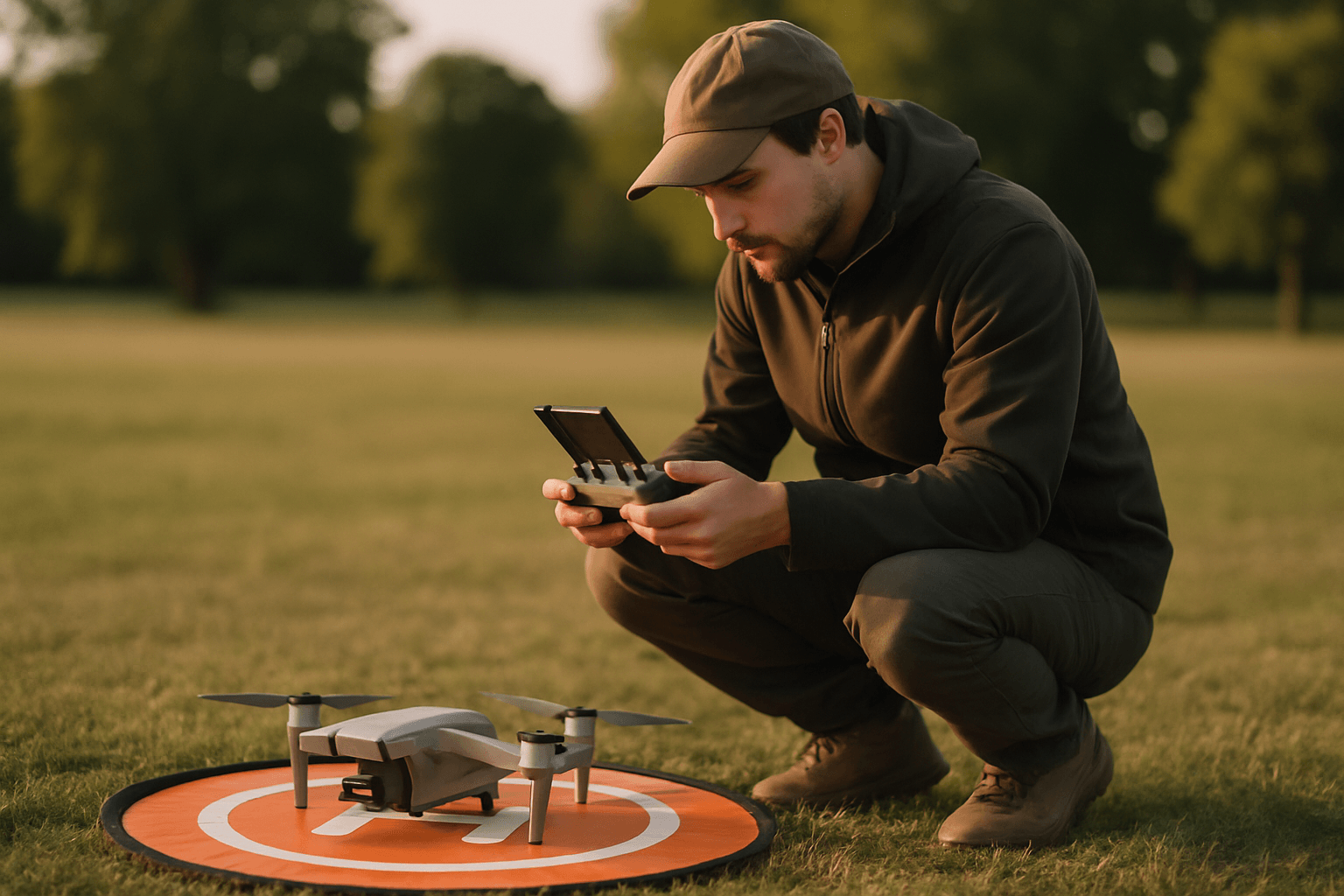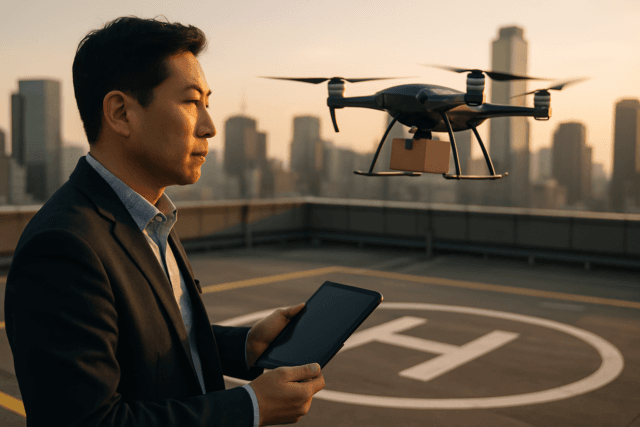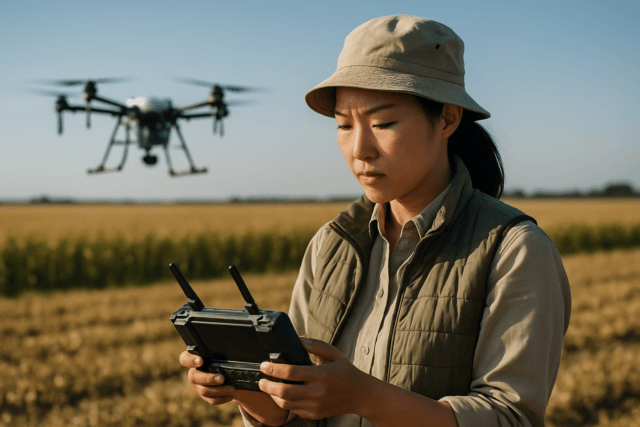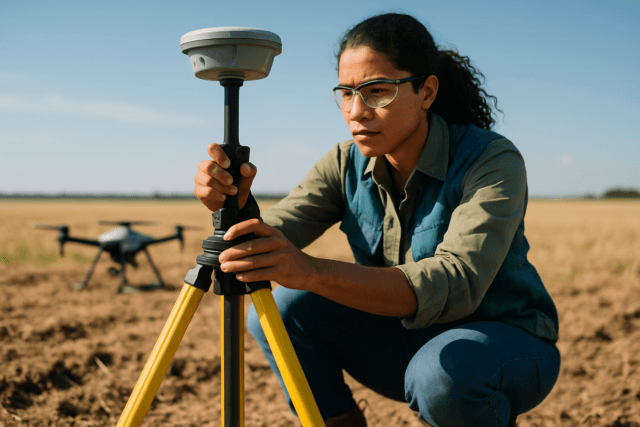The sky, once an exclusive domain, has been democratized by the advent of unmanned aerial vehicles. What was once the purview of Hollywood productions or specialized industrial applications is now within reach for anyone with a creative spark and a desire to capture breathtaking aerial footage. Yet, stepping into the world of drone videography can feel like navigating a complex airspace. The key is finding a drone that is not only capable of stunning visual capture but is also intuitive and forgiving for the novice pilot.
What Makes a Drone Beginner-Friendly for Videography?
For those new to the skies, selecting the right drone involves a careful balance of performance, ease of use, and safety. A beginner-friendly drone for aerial videography prioritizes features that mitigate common piloting challenges while still delivering impressive visual quality.
Ease of Control and Stability
The first hurdle for any new pilot is mastering flight. Drones designed for beginners often feature simplified controls, GPS stabilization, and intelligent flight modes that automate complex maneuvers. GPS functionality is particularly crucial, enabling the drone to maintain a stable hover even in light winds, which is essential for smooth video recording. Look for features like “Altitude Hold” and “One Key Takeoff/Landing” to simplify initial flights.
Camera Quality and Gimbal Stabilization
While a beginner drone won’t match professional cinema cameras, it should still offer respectable video quality. Many entry-level videography drones now boast 4K capabilities, providing crisp and detailed footage. Equally important is a gimbal, a mechanical stabilization system that counteracts drone movements, ensuring your videos are smooth and free of jitters. A 2-axis or 3-axis gimbal significantly improves video stability over electronic image stabilization (EIS) alone.
Safety Features and Durability
Crashes are an inevitable part of the learning curve. Therefore, robust build quality and essential safety features are paramount. Obstacle avoidance systems, particularly three-way (front, rear, and underside) or omnidirectional sensing, can prevent costly collisions by automatically stopping the drone when an obstacle is detected. Other vital safety features include “Return-to-Home (RTH)” in case of signal loss or low battery, and geo-fencing to restrict flight in no-fly zones. Propeller guards can also add a layer of protection during early flights.
Portability and Weight Regulations
Many popular beginner drones are designed to be lightweight and foldable, making them easy to transport. Drones weighing under 250 grams (0.55 lbs) are particularly attractive as they often fall below registration requirements in many countries and regions, simplifying the entry into drone piloting.
Battery Life
Longer flight times mean more opportunity to practice flying and capture footage without interruption. Look for drones offering at least 20-30 minutes of flight time, and consider purchasing extra batteries to maximize your sessions.
Top Drones for Aspiring Aerial Videographers
Several drones consistently rise to the top for their blend of beginner-friendliness and videography capabilities.
DJI Mini Series: The Go-To for Many
DJI’s Mini series is consistently lauded as an excellent starting point for aerial videography due to its compact size, ease of use, and impressive camera performance.
DJI Mini 4 Pro
The DJI Mini 4 Pro is often cited as an ideal choice for beginners seeking a premium experience. Weighing under 249g, it generally avoids the need for training or examinations in many regions. It boasts 4K/60fps HDR video, omnidirectional obstacle sensing, and advanced flight features like ActiveTrack 360°, making it incredibly safe and capable. Its intuitive controls and robust safety features contribute to a smooth and enjoyable flying experience for novices. It can also shoot in a D-Log M color profile, which is typically found in professional models, offering greater flexibility for post-production.
DJI Mini 4K
For those on a tighter budget, the DJI Mini 4K offers a fantastic entry point. It’s lightweight, easy to pilot, and captures sharp 4K video. While it may lack the advanced obstacle avoidance of the Mini 4 Pro, its intuitive controls and value make it a strong contender for learning the fundamentals of aerial videography without a significant financial commitment.
Autel EVO Nano+ Series: A Strong Alternative
The Autel EVO Nano+ is another highly recommended drone for beginners. It’s praised for its stable video delivery and excellent obstacle avoidance system, which detects obstacles from the front, rear, and underside, significantly reducing the chance of accidental crashes. The Nano+ can shoot 4K video at 30fps and even still images in Raw format, offering potential for professional workflows as skills develop. Its ability to control maximum distance and height limits through the app is also a reassuring feature for new pilots.
Holy Stone HS720G: Budget-Friendly Learning
The Holy Stone HS720G presents a more affordable option for beginners looking to practice flight controls and capture basic 4K video. It features a 4K camera on a two-axis gimbal, providing reasonably smooth video, though not quite on par with DJI Mini series drones. The HS720G includes GPS positioning, Follow Me mode, Orbit mode, and Return to Home, offering a good suite of intelligent flight features for its price point. While its camera functionality is more basic, it serves as a cost-effective platform to master drone piloting before investing in a more expensive model.
FIMI X8 Mini V2: Feature-Rich and Portable
The FIMI X8 Mini V2 is a strong contender in the sub-250g category, offering 4K camera capabilities with a 3-axis mechanical gimbal for stable footage. It boasts a respectable flight time of up to 37 minutes and a 9-kilometer video transmission range, providing ample opportunity for exploration and videography. Features like intelligent tracking modes and strong GPS positioning for stable flight in windy conditions make it appealing for beginners seeking advanced functionalities.
Ryze Tello: The Ultra-Budget Entry
While primarily designed for learning and fun, the Ryze Tello can serve as an ultra-budget introduction to aerial videography for those on a very tight budget. It’s small, lightweight (around 80 grams), and incredibly easy to fly, especially indoors. The Tello features a 5MP camera that records 720p HD video and includes electronic image stabilization. Its propeller guards and onboard sensors contribute to safer indoor flights. While its camera quality and flight range are limited compared to other drones on this list, it’s an excellent tool for mastering basic flight controls and understanding drone mechanics before investing in a more advanced videography drone.
Key Considerations Before Your First Flight
Beyond choosing the right drone, several crucial aspects contribute to a successful and enjoyable aerial videography journey.
Understanding Drone Regulations
Before taking to the skies, it’s vital to familiarize yourself with local drone regulations. Many countries have specific rules regarding drone weight, registration, and no-fly zones. Drones under 250 grams often have fewer restrictions, making them ideal for beginners. However, understanding and adhering to these rules ensures safe and legal operation.
Practice Piloting Skills
Even with beginner-friendly features, practice is essential. Start in open, unobstructed areas away from people and obstacles. Focus on basic maneuvers like takeoff, landing, hovering, and smooth directional changes. Many drones offer beginner modes with reduced speeds and limits, which are excellent for building confidence.
Essential Accessories for Aerial Videography
To enhance your aerial videography experience, consider a few key accessories. Spare batteries are almost a necessity, extending your flight time significantly. A fast microSD card (UHS-I Speed Grade 3 or above) is crucial for recording high-resolution video and photos without issues. A carrying case can protect your drone during transport, and a landing pad can provide a clean and consistent takeoff/landing surface.
Embarking on the journey of aerial videography with the right beginner drone opens up a world of creative possibilities. By prioritizing ease of use, essential safety features, and a capable camera, new pilots can confidently capture stunning perspectives from above.





